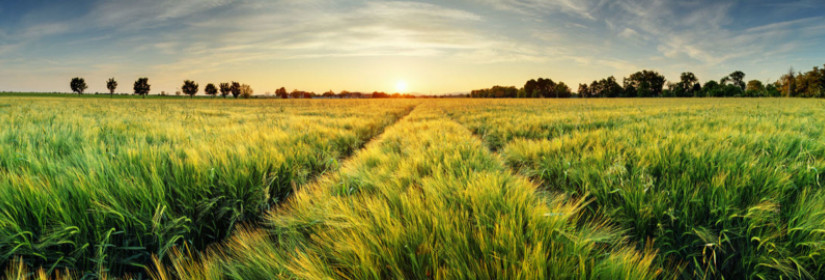Landscape can be a great source of atmosphere and inspiration in a story. From the desert planet Arrakis in Frank Herbert’s Dune to the rolling hills and menacing mountains of Tolkien’s Middle Earth, it’s central to many memorable books.
So how can you use landscape to shape your stories and craft?
Getting the Feeling
Whether you’re developing an entirely imaginary landscape or taking inspiration from a real one, emotions are important. They’re what draw readers in.
But successfully portraying emotions takes some careful calculation.
Close your eyes and think about the landscape you’re working on. If it’s real, how does it make you feel? If you’re inventing it, what feelings do you want to evoke in your readers? Is this place comforting, menacing, bleak, hopeful, bewildering, awe-inspiring…?
Now think about what details in the landscape create that feeling. Do the warm colours and traditional farm houses provide a sense of comforting familiarity? Do looming peaks, long shadows and withered trees create a sense of desolation?
Atmosphere
Once you know what feeling you’re going for, you can evoke the atmosphere of the place. The right descriptive details can do this in very few words, so take a moment to consider your options. Brainstorm the adjectives and features of the place that make it distinctive and give it that atmosphere. List things you could compare the landscape with that are both visually and emotionally similar.
One of the best examples of this comes from the start of Neuromancer by William Gibson:
“The sky above the port was the color of television, tuned to a dead channel.”
For readers at the time, this created an image of grey fuzz, an uninspiring sky that hangs without hope above the port. But it’s Gibson’s metaphor that goes beyond this. He evokes broken technology, immediately creating a sense of a place where human artifice is important and where things don’t work. It’s a bleak and striking image.
Whatever the real visual details of your landscape, focus on the ones that match your story and the feelings you want to evoke.
Character
Landscape can provide great inspiration for characters. It can also add depth and richness to the ones you have.
Think about what sort of people live in the landscape you have created, and how it affects them. Lancre, a mountain city-state in Terry Pratchett’s Discworld, is a great example of this. Its isolation fosters people with an insular view of their reality. They don’t know or understand much about the outside world. It creates a comedy of rustic yokels with strange and backward views.
But Lancre also has its serious side. Life in the mountains is hard, all the more so for people trying to farm on rocky ground. The same characters whose insularity we laugh at show a sturdy practicality and toughness of character that is a great strength.
Pratchett uses this to round out the supporting cast of his witches books, but landscape can equally be used to create lead characters. If your protagonist lives in a swamp then she’s unlikely to be squeamish about dirt and smells. Maybe she looks down on those who are, maybe she dreams of their cleaner lives, or maybe there’s a bit of both. She will have skills for surviving in that swamp – perhaps a knowledge of herbs, bird hunting, and how to spot deep, drowning mud. What does she wear if it’s been made from what can be found there?
Think of Ned Stark’s grim outlook in Game of Thrones and you can see a man deeply shaped by his landscape.
Whether you’re creating a whole new character or refining an existing one, landscape can provide inspiration and make your character feel more real. After all, none of us exist in isolation from our surroundings.
Try it for Yourself
You’ve got the principles, so now try it for yourself.
Close your eyes and picture a landscape you find particularly evocative – maybe something from childhood or a dramatic place you saw on holiday. Consider the feelings it evokes. Remember the details.
Once you’ve opened your eyes, write down these feelings and the features of the landscape that foster them. Consider how you might describe them, through adjectives or metaphors, to add to that atmosphere. Which features could you exaggerate to create something more dramatic and fantastical?
Finally, imagine someone who might live in your exaggerated landscape. How do they dress? What skills do they have? How has the landscape shaped their moral perspective?
Maybe this will lead you to a new story. Maybe it will just help you practice a useful skill. Whatever it provides, I hope that you enjoy it, and that it pushes you to ever-better writing.
Landscape can be powerful. Make use of it.
Huge thanks to R J Barker, whose workshop at Sledge-Lit 2016 inspired this article.




